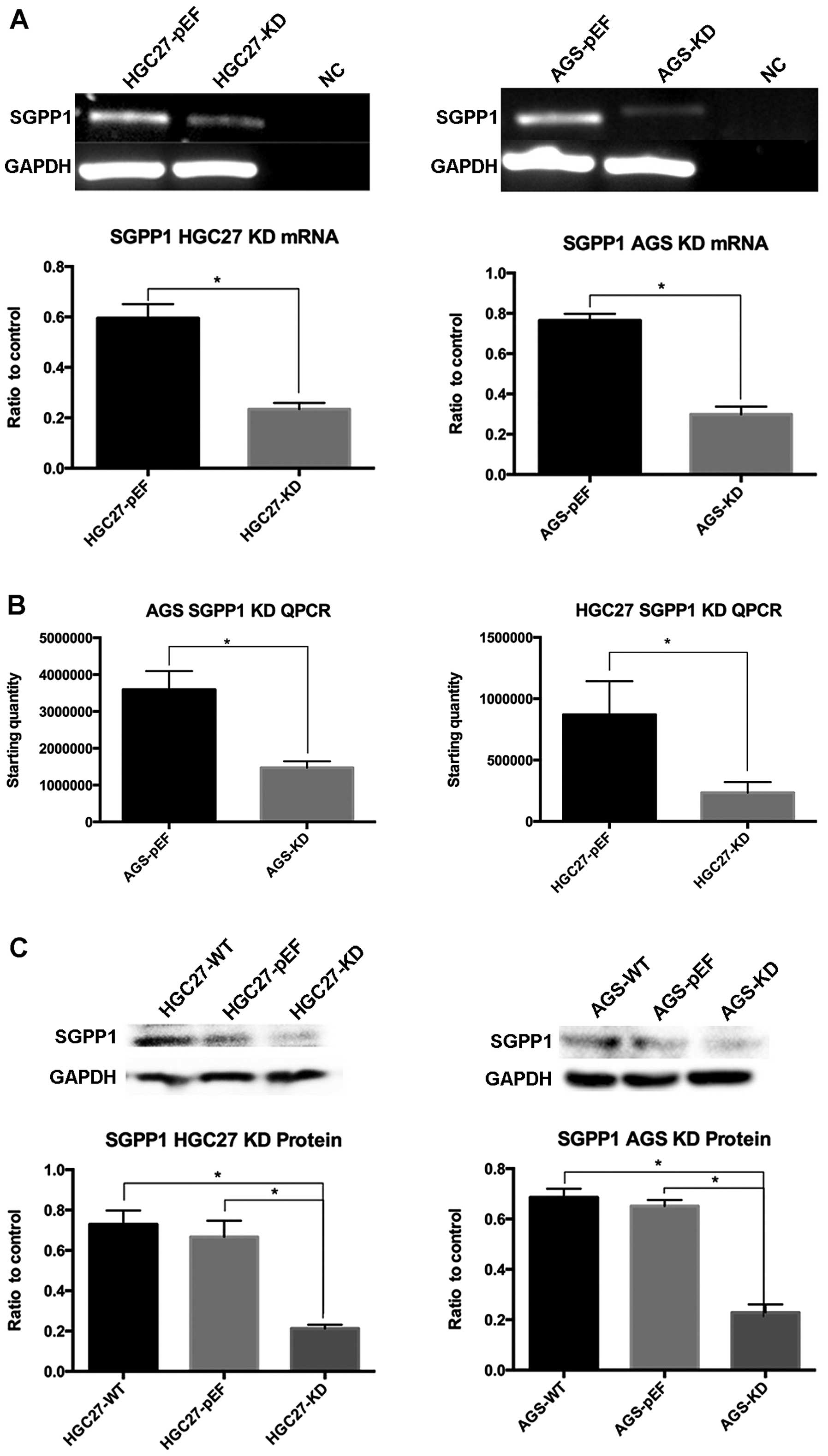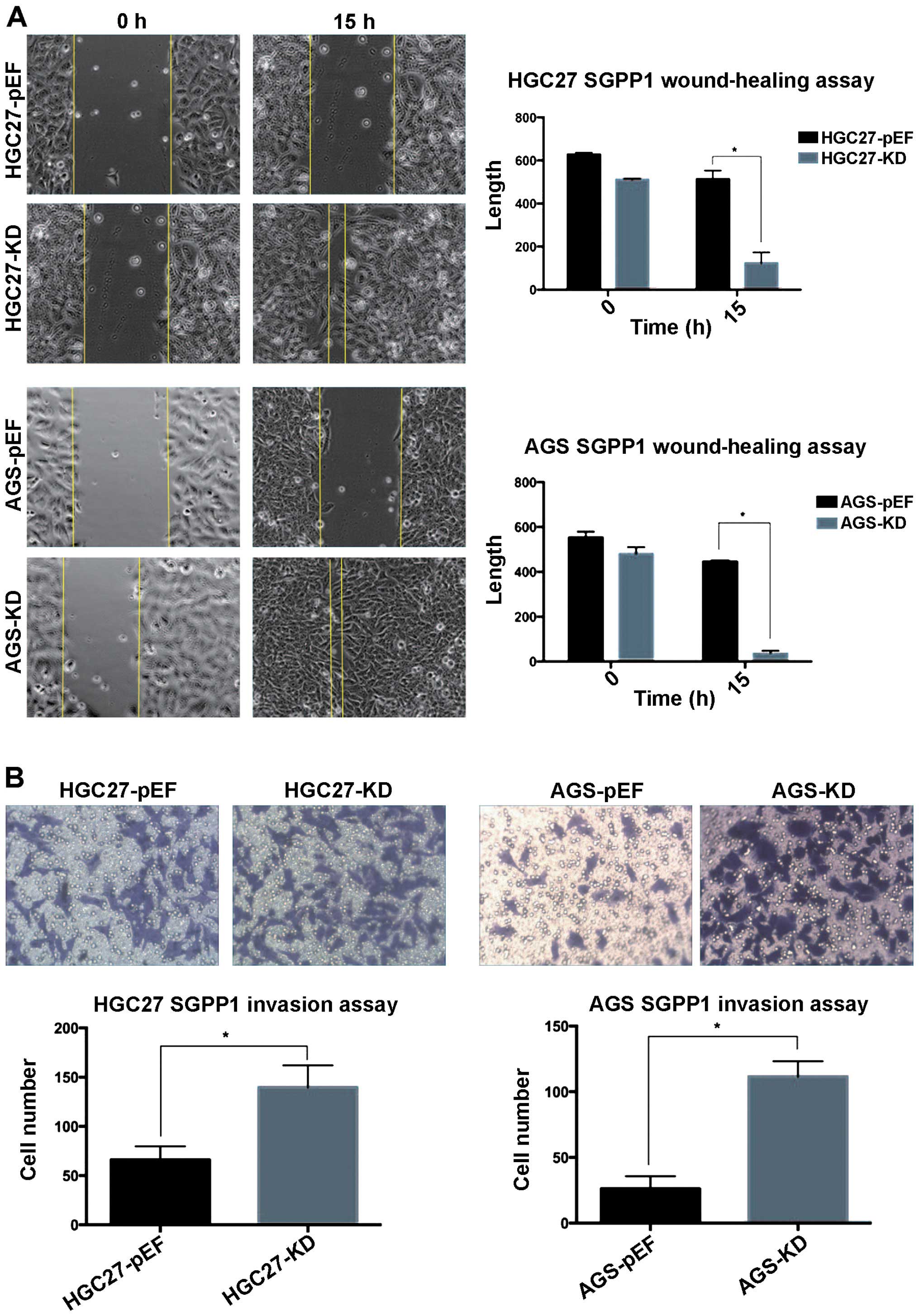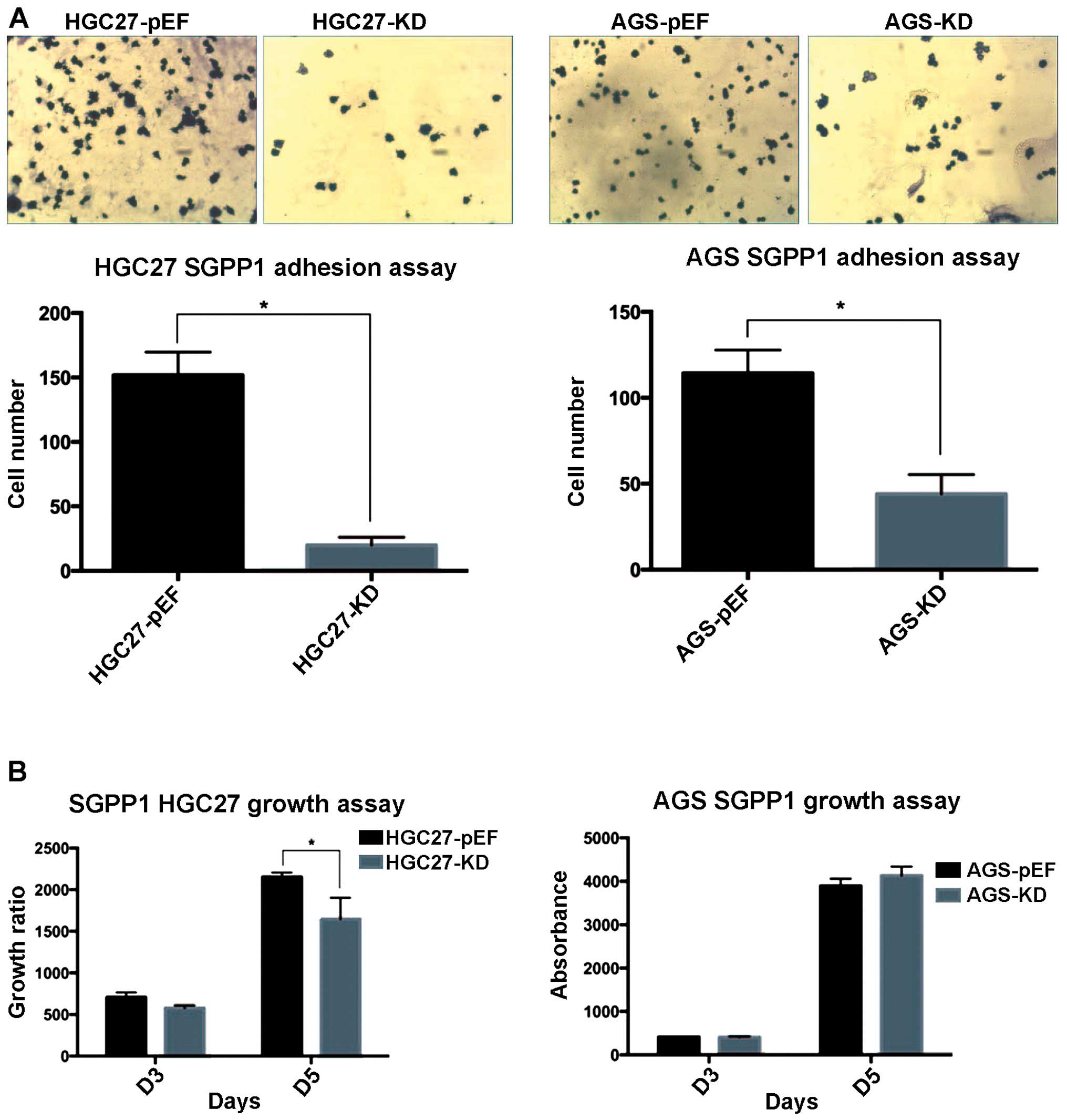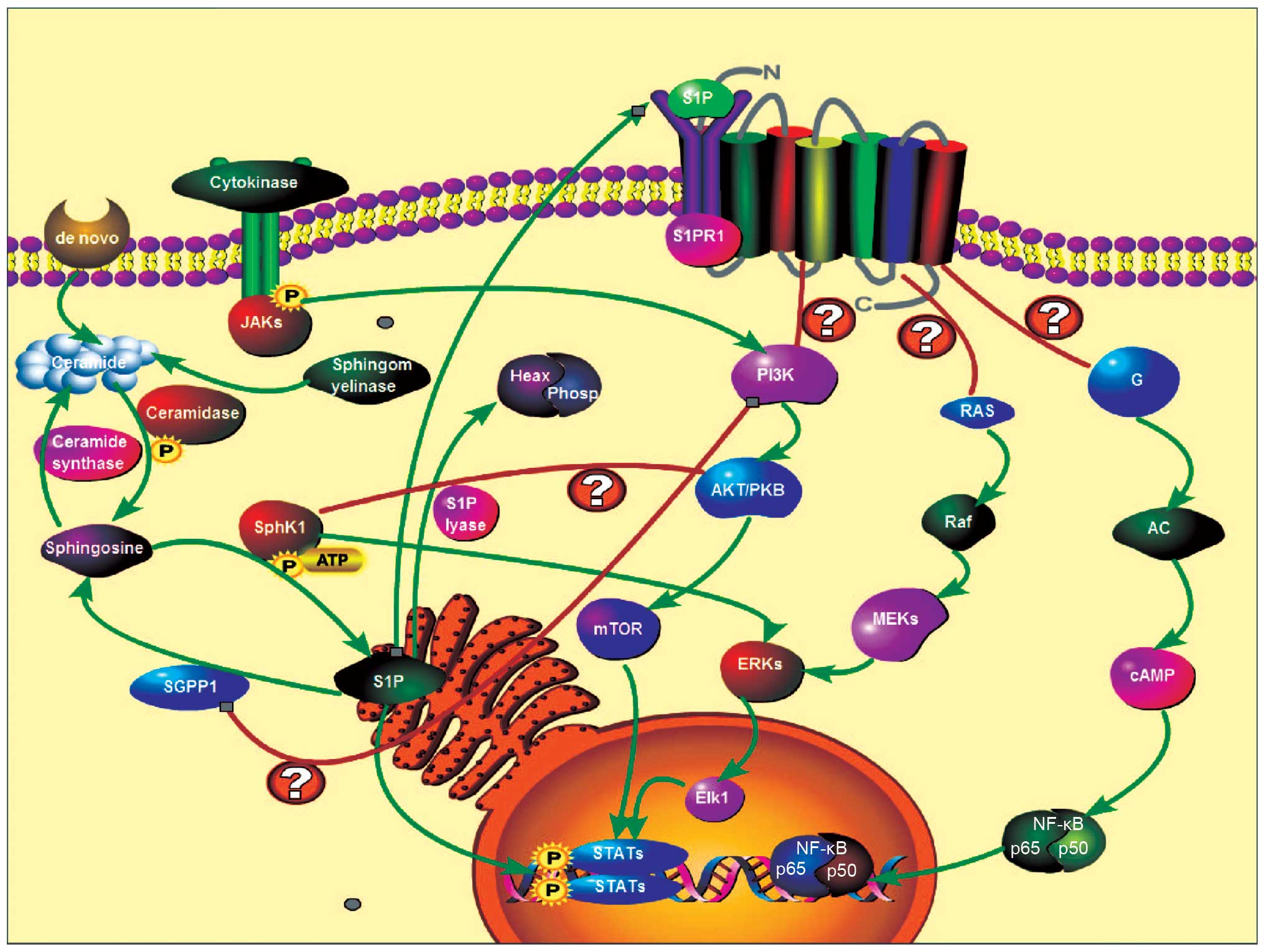|
1
|
Jemal A, Bray F, Center MM, Ferlay J, Ward
E and Forman D: Global cancer statistics. CA Cancer J Clin.
61:69–90. 2011. View Article : Google Scholar : PubMed/NCBI
|
|
2
|
Cunningham D and Chua YJ: East meets west
in the treatment of gastric cancer. N Engl J Med. 357:1863–1865.
2007. View Article : Google Scholar : PubMed/NCBI
|
|
3
|
Petrelli NJ: The debate is over; it's time
to move on. J Clin Oncol. 22:2041–2042. 2004. View Article : Google Scholar : PubMed/NCBI
|
|
4
|
Cunningham D, Allum WH, Stenning SP,
Thompson JN, Van de Velde CJ, Nicolson M, Scarffe JH, Lofts FJ,
Falk SJ, Iveson TJ, et al MAGIC Trial Participants: Perioperative
chemotherapy versus surgery alone for resectable gastroesophageal
cancer. N Engl J Med. 355:11–20. 2006. View Article : Google Scholar : PubMed/NCBI
|
|
5
|
Bang YJ, Van Cutsem E, Feyereislova A,
Chung HC, Shen L, Sawaki A, Lordick F, Ohtsu A, Omuro Y, Satoh T,
et al ToGA Trial Investigators: Trastuzumab in combination with
chemotherapy versus chemotherapy alone for treatment of
HER2-positive advanced gastric or gastro-oesophageal junction
cancer (ToGA): A phase 3, open-label, randomised controlled trial.
Lancet. 376:687–697. 2010. View Article : Google Scholar : PubMed/NCBI
|
|
6
|
Van Cutsem E, de Haas S, Kang YK, Ohtsu A,
Tebbutt NC, Ming Xu J, Peng Yong W, Langer B, Delmar P, Scherer SJ,
et al: Bevacizumab in combination with chemotherapy as first-line
therapy in advanced gastric cancer: A biomarker evaluation from the
AVAGAST randomized phase III trial. J Clin Oncol. 30:2119–2127.
2012. View Article : Google Scholar : PubMed/NCBI
|
|
7
|
Payne SG, Milstien S and Spiegel S:
Sphingosine-1-phosphate: Dual messenger functions. FEBS Lett.
531:54–57. 2002. View Article : Google Scholar : PubMed/NCBI
|
|
8
|
Johnson KR, Johnson KY, Becker KP,
Bielawski J, Mao C and Obeid LM: Role of human
sphingosine-1-phosphate phosphatase 1 in the regulation of intra-
and extracellular sphin-gosine-1-phosphate levels and cell
viability. J Biol Chem. 278:34541–34547. 2003. View Article : Google Scholar : PubMed/NCBI
|
|
9
|
Le Stunff H, Galve-Roperh I, Peterson C,
Milstien S and Spiegel S: Sphingosine-1-phosphate phosphohydrolase
in regulation of sphingolipid metabolism and apoptosis. J Cell
Biol. 158:1039–1049. 2002. View Article : Google Scholar : PubMed/NCBI
|
|
10
|
Huang X, Taeb S, Jahangiri S, Emmenegger
U, Tran E, Bruce J, Mesci A, Korpela E, Vesprini D, Wong CS, et al:
miRNA-95 mediates radioresistance in tumors by targeting the
sphingolipid phosphatase SGPP1. Cancer Res. 73:6972–6986. 2013.
View Article : Google Scholar : PubMed/NCBI
|
|
11
|
Ji K, Ye L, Toms AM, Hargest R, Martin TA,
Ruge F, Ji J and Jiang WG: Expression of signal-induced
proliferation-associated gene 1 (SIPA1), a RapGTPase-activating
protein, is increased in colorectal cancer and has diverse effects
on functions of colorectal cancer cells. Cancer Genomics
Proteomics. 9:321–327. 2012.PubMed/NCBI
|
|
12
|
Jiang WG, Grimshaw D, Lane J, Martin TA,
Abounader R, Laterra J and Mansel RE: A hammerhead ribozyme
suppresses expression of hepatocyte growth factor/scatter factor
receptor c-MET and reduces migration and invasiveness of breast
cancer cells. Clin Cancer Res. 7:2555–2562. 2001.PubMed/NCBI
|
|
13
|
Parr C and Jiang WG: Metastasis suppressor
1 (MTSS1) demonstrates prognostic value and anti-metastatic
properties in breast cancer. Eur J Cancer. 45:1673–1683. 2009.
View Article : Google Scholar : PubMed/NCBI
|
|
14
|
Jiang WG, Hiscox S, Hallett MB, Scott C,
Horrobin DF and Puntis MC: Inhibition of hepatocyte growth
factor-induced motility and in vitro invasion of human colon cancer
cells by gamma-linolenic acid. Br J Cancer. 71:744–752. 1995.
View Article : Google Scholar : PubMed/NCBI
|
|
15
|
Jiang WG, Hiscox SE, Parr C, Martin TA,
Matsumoto K, Nakamura T and Mansel RE: Antagonistic effect of NK4,
a novel hepatocyte growth factor variant, on in vitro angiogenesis
of human vascular endothelial cells. Clin Cancer Res. 5:3695–3703.
1999.PubMed/NCBI
|
|
16
|
Bertuccio P, Chatenoud L, Levi F, Praud D,
Ferlay J, Negri E, Malvezzi M and La Vecchia C: Recent patterns in
gastric cancer: A global overview. Int J Cancer. 125:666–673. 2009.
View Article : Google Scholar : PubMed/NCBI
|
|
17
|
Rivera F, Vega-Villegas ME and López-Brea
MF: Chemotherapy of advanced gastric cancer. Cancer Treat Rev.
33:315–324. 2007. View Article : Google Scholar : PubMed/NCBI
|
|
18
|
Sasako M, Sakuramoto S, Katai H, Kinoshita
T, Furukawa H, Yamaguchi T, Nashimoto A, Fujii M, Nakajima T and
Ohashi Y: Five-year outcomes of a randomized phase III trial
comparing adjuvant chemotherapy with S-1 versus surgery alone in
stage II or III gastric cancer. J Clin Oncol. 29:4387–4393. 2011.
View Article : Google Scholar : PubMed/NCBI
|
|
19
|
Lee J, Lim H, Kim S, Park SH, Park JO,
Park YS, Lim HY, Choi MG, Sohn TS, Noh JH, et al: Phase III trial
comparing capecitabine plus cisplatin versus capecitabine plus
cisplatin with concurrent capecitabine radiotherapy in completely
resected gastric cancer with D2 lymph node dissection: The ARTIST
trial. J Clin Oncol. 30:268–273. 2012. View Article : Google Scholar
|
|
20
|
Falcone A: Future strategies and adjuvant
treatment of gastric cancer. Ann Oncol. 14(Suppl 2): ii45–47. 2003.
View Article : Google Scholar : PubMed/NCBI
|
|
21
|
Hannun YA: Functions of ceramide in
coordinating cellular responses to stress. Science. 274:1855–1859.
1996. View Article : Google Scholar : PubMed/NCBI
|
|
22
|
Boujaoude LC, Bradshaw-Wilder C, Mao C,
Cohn J, Ogretmen B, Hannun YA and Obeid LM: Cystic fibrosis
transmembrane regulator regulates uptake of sphingoid base
phosphates and lysophosphatidic acid: Modulation of cellular
activity of sphingosine 1-phosphate. J Biol Chem. 276:35258–35264.
2001. View Article : Google Scholar : PubMed/NCBI
|
|
23
|
Hannun YA and Obeid LM: Principles of
bioactive lipid signalling: Lessons from sphingolipids. Nat Rev Mol
Cell Biol. 9:139–150. 2008. View Article : Google Scholar : PubMed/NCBI
|
|
24
|
Wojciak JM, Zhu N, Schuerenberg KT, Moreno
K, Shestowsky WS, Hiraiwa M, Sabbadini R and Huxford T: The crystal
structure of sphingosine-1-phosphate in complex with a Fab fragment
reveals metal bridging of an antibody and its antigen. Proc Natl
Acad Sci USA. 106:17717–17722. 2009. View Article : Google Scholar : PubMed/NCBI
|
|
25
|
Hla T, Lee MJ, Ancellin N, Paik JH and
Kluk MJ: Lysophospholipids - receptor revelations. Science.
294:1875–1878. 2001. View Article : Google Scholar : PubMed/NCBI
|
|
26
|
Anliker B and Chun J: Lysophospholipid G
protein-coupled receptors. J Biol Chem. 279:20555–20558. 2004.
View Article : Google Scholar : PubMed/NCBI
|
|
27
|
Strub GM, Paillard M, Liang J, Gomez L,
Allegood JC, Hait NC, Maceyka M, Price MM, Chen Q, Simpson DC, et
al: Sphingosine-1-phosphate produced by sphingosine kinase 2 in
mitochondria interacts with prohibitin 2 to regulate complex IV
assembly and respiration. FASEB J. 25:600–612. 2011. View Article : Google Scholar :
|
|
28
|
Alvarez SE, Harikumar KB, Hait NC,
Allegood J, Strub GM, Kim EY, Maceyka M, Jiang H, Luo C, Kordula T,
et al: Sphingosine-1-phosphate is a missing cofactor for the E3
ubiquitin ligase TRAF2. Nature. 465:1084–1088. 2010. View Article : Google Scholar : PubMed/NCBI
|
|
29
|
Hait NC, Allegood J, Maceyka M, Strub GM,
Harikumar KB, Singh SK, Luo C, Marmorstein R, Kordula T, Milstien
S, et al: Regulation of histone acetylation in the nucleus by
sphingosine-1-phosphate. Science. 325:1254–1257. 2009. View Article : Google Scholar : PubMed/NCBI
|
|
30
|
Xia P and Wadham C: Sphingosine
1-phosphate, a key mediator of the cytokine network: Juxtacrine
signaling. Cytokine Growth Factor Rev. 22:45–53. 2011. View Article : Google Scholar
|
|
31
|
Mandala SM, Thornton R, Galve-Roperh I,
Poulton S, Peterson C, Olivera A, Bergstrom J, Kurtz MB and Spiegel
S: Molecular cloning and characterization of a lipid
phosphohydrolase that degrades sphingosine-1- phosphate and induces
cell death. Proc Natl Acad Sci USA. 97:7859–7864. 2000. View Article : Google Scholar : PubMed/NCBI
|
|
32
|
Ogawa C, Kihara A, Gokoh M and Igarashi Y:
Identification and characterization of a novel human
sphingosine-1-phosphate phosphohydrolase, hSPP2. J Biol Chem.
278:1268–1272. 2003. View Article : Google Scholar
|
|
33
|
Mandala SM: Sphingosine-1-phosphate
phosphatases. Prostaglandins. 64:143–156. 2001. View Article : Google Scholar : PubMed/NCBI
|
|
34
|
Venkataraman K, Lee YM, Michaud J,
Thangada S, Ai Y, Bonkovsky HL, Parikh NS, Habrukowich C and Hla T:
Vascular endothelium as a contributor of plasma sphingosine
1-phosphate. Circ Res. 102:669–676. 2008. View Article : Google Scholar : PubMed/NCBI
|
|
35
|
Lépine S, Allegood JC, Park M, Dent P,
Milstien S and Spiegel S: Sphingosine-1-phosphate
phosphohydrolase-1 regulates ER stress-induced autophagy. Cell
Death Differ. 18:350–361. 2011. View Article : Google Scholar :
|
|
36
|
Peter BF, Lidington D, Harada A, Bolz HJ,
Vogel L, Heximer S, Spiegel S, Pohl U and Bolz SS: Role of
sphingosine-1-phosphate phosphohydrolase 1 in the regulation of
resistance artery tone. Circ Res. 103:315–324. 2008. View Article : Google Scholar : PubMed/NCBI
|
|
37
|
Cervantes A, Roselló S, Roda D and
Rodríguez-Braun E: The treatment of advanced gastric cancer:
Current strategies and future perspectives. Ann Oncol. 19(Suppl 5):
v103–v107. 2008. View Article : Google Scholar : PubMed/NCBI
|



















